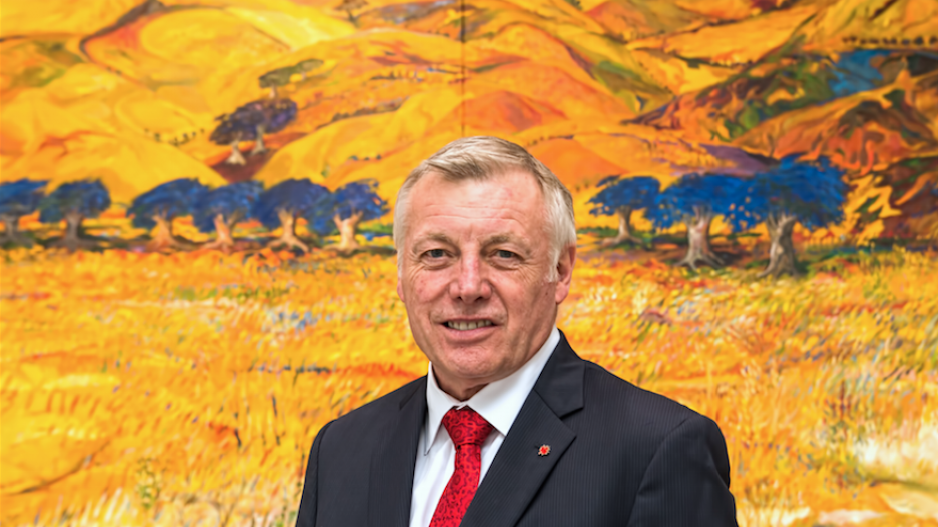Frequent travellers between Vancouver and Seattle know the commute down Highway 99 and the I-5 can be a congestion nightmare rivalling a rush-hour jaunt across the Big Apple.
But if the highways could be cleared of all traffic, the trip between the cities would suddenly shift from turtle to hare speeds.
Ken Thorpe wants to make that a reality – at least for the information superhighway linking the Cascadia region.
In late 2016 the VariNet TeleServices Inc. CEO began looking along the corridor between the cities for “dark fibre” – an industry term for unused fibre optic cable – for alternatives to the infrastructure that’s been around since the 1990s.
“After doing more research we found that the existing fibre between Vancouver and Seattle is full. There’s no dark fibre left between the two cities,” said Thorpe, who launched VariNet in 2005 as a facilities-based provider for voice and data services.
“So you get companies here that haven’t even forecasted yet what their data use is going to be, because there isn’t anywhere to put it between the two cities.”
He’s now leading the Cascadia Fibre Project to build a new fibre-optic network between the two cities in the next year at a cost of approximately $60 million, with shovels expected to be in the ground by late November or mid-December.
“The real challenge is that American companies that come here and are asking their American providers … to provide them services in Canada are being strangled by the pricing that the Canadian suppliers charge on a wholesale basis.”
Thorpe added that a carrier-neutral, open-access dark fibre network along the corridor would produce more economic opportunities for companies based on either side of the border.
Anand Gandhi, chief technology officer at New Jersey-based network infrastructure firm Squan Construction Services LLC’s wireless division, said the $60 million price tag is a reasonable estimate, but the one-year timeline may prove difficult.
“The key challenges to complete the project within 12 months will be to finalize the design timely [sic], work in parallel with the multiple jurisdictions which will be encountered, understand and implement the process of crossing an international border and allow ample time for construction due to potential weather delays in the region,” he said in an email.
“The crossing of an international border brings a complexity to the equation. Will each country support and aid the growth? The good news is that the United States and Canada are friendly, so perhaps that would not be an obstacle.”
Thorpe said his group has reached agreements with officials on both sides of the border to ensure construction across multiple jurisdictions goes smoothly, including one agreement that will see part of the fibre network laid along a duct parallel with the Trans-Canada Highway.
In exchange, the government would receive access to some strands of fibre.
Meanwhile, the Cascadia Fibre Project has also been striking arrangements with other groups that have built out smaller fibre networks in Washington state so that the partners can work together and connect them instead of building the network from scratch.
“While we’ve got a very well-established electrified grid connection north-south … there’s other portions of the infrastructure that need upgrading,” said Greg D’Avignon, CEO of the Business Council of BC.
“So that’s one market opportunity that individuals have seen and obviously it’s encouraged in the digital economy moving forward: How do we move more data more efficiently between the jurisdictions?”
He emphasized that he remains agnostic on the specific project, but his organization in recent years has been shepherding efforts to create closer economic ties throughout the Cascadia region.
Among the high-profile projects being explored is a proposed high-speed rail linking Vancouver, Seattle and Portland.
A July 2019 study submitted to Washington’s state legislature estimated such an infrastructure project could unlock US$355 billion in economic growth and 160,000 new permanent jobs throughout the Cascadia region.
The report determined that the system could be built within a preliminary 2017 estimate of between US$24 billion and US$42 billion.
But D’Avignon said infrastructure projects improving links within the region don’t need to feature only the “pouring of cement or steel girders.”
Instead, he said “soft infrastructure” projects such as measures to make people move through airports more efficiently or the Cascadia Urban Analytics Cooperative between the University of British Columbia and the University of Washington – a joint venture in which the universities collaborate on data science initiatives tackling urban challenges like traffic and homelessness – are also making strides to firm up links throughout the region.
“Anytime we can connect the jurisdictions more effectively to move information, capital and talent, it’s a good thing for our economy,” D’Avignon said.




